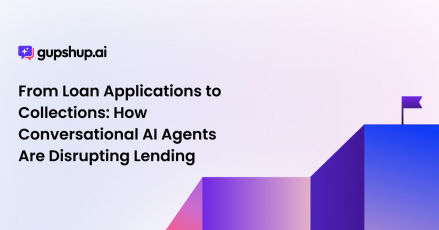Conversational Banking: Transforming An Old System
On May 20, 2021Notes
In this episode of the #ConversationalMessaging Podcast, Beerud Sheth – CEO of Gupshup and Srini – VP of Marketing at Gupshup talk about how the banking industry keeps up with the digitized world. They discuss the challenge of transforming offline and online banking to “conversational” banking, which makes banking seamless for all generations. They also discuss the three stages of this transformation: the marketing, transactional, and support stage.
Making The Experience Seamless
Banks found ways to reduce consumers’ pain points by launching banking websites and applications. However, consumers still take a lot of time and effort to do simple transactions like payments, balance inquiries, money transfers, and such. Beerud thinks that it’s more convenient if consumers are able to do everything in one go. How? By incorporating these easy transactions in messaging-like platforms.
Search ads, social media ads, or other digital ads are the different entry points, whether it’s offline or online advertising. From that, they come into this conversational experience where the users can customize their journey as they discover and find the right product. That’s the marketing part.
Beerud Sheth, CEO of Gupshup
Making The Experience Contextual
Simple transactions are a perfect opportunity to upsell or cross-sell to consumers. Its success lies in making sure that the offers and recommendations for the consumers are timely and relevant, making it an added value to their experience. This contextual placement of transactions is a win not only for the consumers but more importantly, for the banks as this prompts more transactions from the consumers.
Making The Experience Satisfactory
Beerud talks about how conversational banking positively affects customer satisfaction as it promotes unlimited availability and accessibility. Instead of making the consumers unhappy because of long hold times on the phone, conversational banking allows them to resolve conflicts at their own time and pace. Most importantly, with continuous development, this kind of banking with the highest regard to data security and user privacy can be the safest and most secure.





